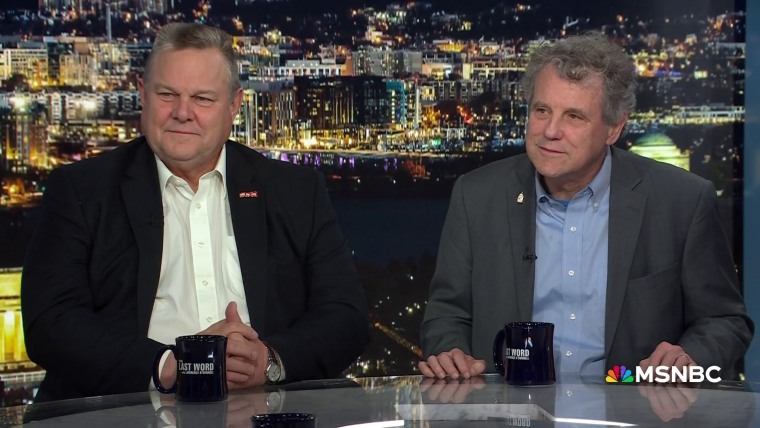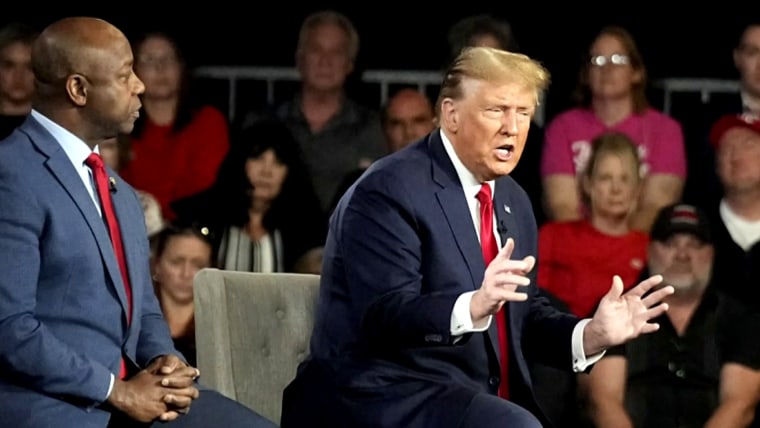In a statement that had all the enthusiasm of a hostage video, Sen. John Thune of South Dakota, a “reasonable” Republican and occasional critic of Donald Trump, endorsed the former president this week. The two other “Johns” angling with Thune to be Republican leader when Sen. Mitch McConnell steps down at the end of the year — Sens. Cornyn of Texas and Barrasso of Wyoming — had already given Trump their support. Thune was late to bend the knee, but bend it he did.
One more prominent Republican lining up behind the party’s inevitable presidential nominee is not shocking news. But the fact that Thune was so clearly reluctant to genuflect before Trump shows that someone like him — a rural-state Republican who’s very conservative, but not a MAGA bomb-thrower — is already an anachronism. In the kind of rural, overwhelmingly white state that Thune represents, Trumpism is the only game in town.
Rural whites are more likely to express racism, xenophobia and conspiracism than Americans who live elsewhere.
As Trump heads toward the nomination, rural voters are once again the foundation of his support. In the Michigan primary, for instance, Trump beat Nikki Haley handily in every part of the state, but his largest margin of victory came in rural areas. According to data assembled by The Daily Yonder, he outpolled Haley by 37.6 points in the metropolitan areas of the state. In rural areas, he beat her by 53.2 points.
In the general election, Trump will be buoyed by rural white voters just as he is in the primaries. In fact, if he wins the White House again while losing the popular vote — a distinct possibility — it will be because his rural supporters used their outsize political leverage to put him there.
The disproportionate power that rural voters wield, and their unusual devotion to Trump, are among the topics Tom Schaller and I explore in our new book, “White Rural Rage: The Threat to American Democracy.” Through the Electoral College, the undemocratic Senate (in which Wyoming’s 600,000 residents hold the same influence as California’s 39 million), and gerrymanders in red states that use rural voters to make GOP control impenetrable, rural voters exercise a disproportionate power that no other group enjoys.

At the same time, polls show that rural whites not only are more likely to express racism, xenophobia and conspiracism than Americans who live elsewhere, but their commitment to the American model of democracy is also increasingly tenuous. Of course, that doesn’t apply to all rural whites, and plenty of Americans in suburbs and cities share those views. But rural whites are particularly important because of the unusual political power they wield.
No one understands that better than Trump. The election denialism at the center of his candidacy — both the lie that the 2020 election was stolen and the claim that if he loses again, it will only be because of fraud — finds a particularly receptive audience among rural voters. A 2021 Public Religion Research Institute poll, for instance, found that 22% of those who lived in cities said the 2020 election was stolen, compared to 30% of suburbanites — and 47% of rural respondents.
Over the Trump era, rural America has grown steadily more Republican.
The practical consequences are evident in the politicians who represent these areas, as we saw Jan. 6, 2021. Using the CityLab classification of congressional districts, 48 of the 139 House members who refused to certify the 2020 election — after the insurrection Jan. 6 — came from “purely rural” districts. Another 55 represented “rural-suburban” districts. While 42% of all House districts fall into one of those two categories, members from those districts made up 74% of those who refused to certify the election.
And over the Trump era, rural America has grown steadily more Republican. According to Pew Research Center data, Trump won 59% of the rural vote in 2016, and 65% in 2020. Among just rural whites, he went from 62% in 2016 to 71% in 2020.
It wasn’t always this way. Rural states like Thune’s South Dakota (with its population density of 11.7 people per square mile) may have leaned Republican, but there was still a good measure of intraparty competition. Twenty years ago, the state had not one but two Democratic senators, one of whom, Tom Daschle, served as the Democratic leader in the Senate. The state also produced George McGovern, the most liberal major-party presidential nominee of the last 75 years (at least).

But those days are gone. Today, every partisan statewide elected official in the state is a Republican. The GOP holds supermajorities in both houses of the state Legislature: 31-4 in the state Senate and 63-7 in the House. Trump won the state by 26 points, a number that would have been even higher but for a sizable Native American population — whose votes Republicans in the state have a history of trying to suppress. The state’s hard-right, culture warrior governor, Kristi Noem, is a leading candidate to become Trump’s running mate.
Something similar can be found in rural states and rural areas within states around the country. Rural populations who have suffered economically also lost faith in government, and keep electing Republicans who play on their fears and resentments but do little or nothing to address their very real problems. For his part, Trump is essentially running against democracy — and in the process, telling his most ardent rural supporters that they should discard their own tenuous commitments to the system that has sustained our nation for two and a half centuries. Unfortunately, too many rural whites are ready to believe him.

